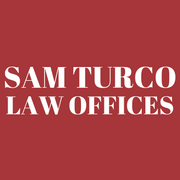
If you’re considering filing for bankruptcy to put a stop to collections calls and relieve the weight of your debts, you should know that there are several different methods of doing so. The four most common types are Chapter 7, Chapter 13, Chapter 12, and Chapter 11. While a bankruptcy attorney is most qualified to explain these and guide you through the process, the following guide offers an overview of their differences.
A Guide to Common Bankruptcy Types
1. Chapter 7
Also known as straight or liquidation bankruptcy, Chapter 7 is one of the most common filings for individuals seeking debt relief. It helps debtors achieve a clean financial state by liquidating their assets to pay back their creditors. When you file for this type of bankruptcy, most of the items you own will be sold. Once done, the remainder of your unsecured debts will be discharged.
You must pass a means test to qualify for Chapter 7 to prove you do not have enough disposable income to pay back what you owe. There are some debts that cannot be discharged by Chapter 7, such as taxes, alimony, and child support.
2. Chapter 13
 This option is designed for people in debt who earn a regular income. Rather than have to liquidate all of your assets to repay your creditors, Chapter 13 allows you to restructure your debt into manageable monthly payments so you can pay off what you owe over time. You’ll work with a court trustee to device a feasible payment plan that typically lasts between three to five years. Once the court approves it, you’ll start making your new payments.
This option is designed for people in debt who earn a regular income. Rather than have to liquidate all of your assets to repay your creditors, Chapter 13 allows you to restructure your debt into manageable monthly payments so you can pay off what you owe over time. You’ll work with a court trustee to device a feasible payment plan that typically lasts between three to five years. Once the court approves it, you’ll start making your new payments.
You can only file for Chapter 13 if your tax filings are up to date, you have a steady income, and you do not have unsecured debts exceeding $250,000 and secured debts exceeding $750,000.
3. Chapter 12
Chapter 12 bankruptcy works the same way that Chapter 13 does. However, it’s designed specifically for family farmers or family fishermen.
4. Chapter 11
Like Chapter 13, Chapter 11 allows debtors to reorganize their debts and pay them off over time. However, unlike Chapter 13, there are no limits on the amount of money a debtor can owe. Your lawyer will likely recommend you file for this type of bankruptcy if your debts exceed the maximum amounts allowed for by Chapter 13.
If you’re struggling with debt, contact Sam Turco Law Offices in Omaha, NE. Focusing solely on bankruptcy law, this firm has provided individuals and businesses across the state with effective debt relief solutions since 1992. Visit the website to learn about the team. Call (402) 614-7171 to schedule a consultation today.
About the Business
Have a question? Ask the experts!
Send your question

